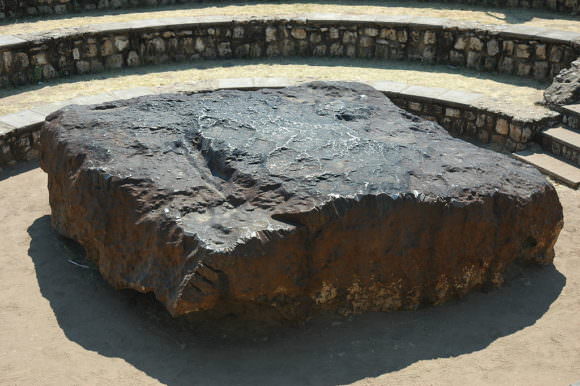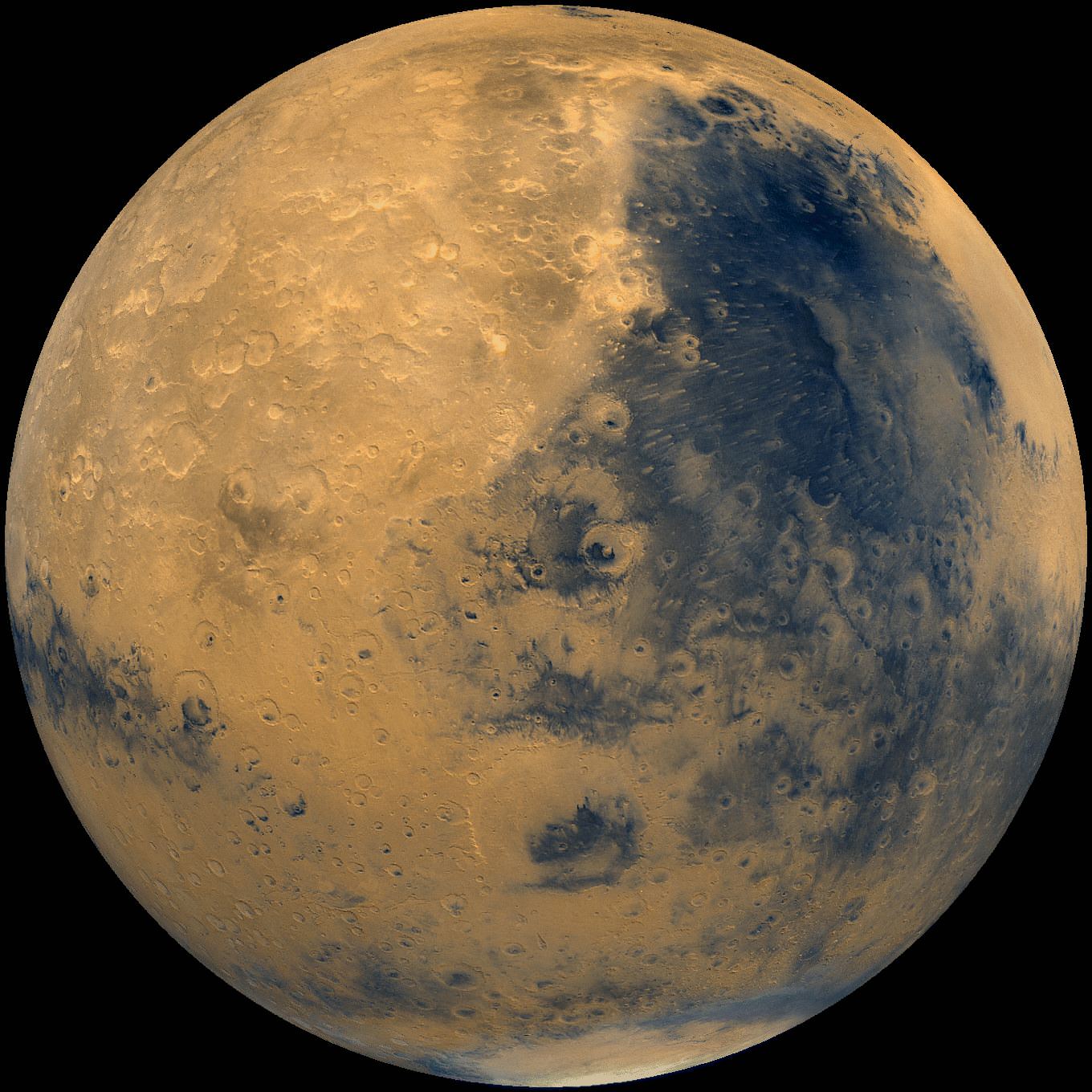Sometimes, the best way to study Mars is to stay home. There’s no substitute for actual missions to Mars, but pieces of Mars have made the journey to Earth, and saved us the trip. Case in point: the treasure trove of Martian meteorites that NASA is gathering from Antarctica.
NASA scientists aren’t the first ones to find meteorites in the Earth’s polar regions. As early as the 9th century, people in the northern polar regions made use of iron from meteorites for tools and hunting weapons. The meteorite iron was traded from group to group over long distances. But for NASA, the hunt for meteorites is focused on Antarctica.
In Antarctica, the frigid temperatures preserve meteorites for a long time, which makes them valuable artifacts in the quest to understand Mars. Meteorites tend to accumulate in places where creeping glacial ice moves them to. When the ice meets a rock obstacle, the meteorites are deposited there, making them easier to find. Recently arrived meteorites are also easily spotted on the surface of the Antarctica ice.
The US began collecting meteorites in Antarctica in 1976, and to date more than 21,000 meteorites and meteorite fragments have been found. In fact, more of them are found in Antarctica than in the rest of the world combined. These meteorites are then shared with scientists around the world.
Collecting meteorites in Antarctica is not a walk in the park. It’s physically gruelling and hazardous work. Antarctica is not an easy environment to live and work in, and just surviving there takes planning and teamwork. But the scientific payoff is huge, which keeps NASA going back.
Meteorites from the Moon and other bodies also arrive on Earth, and are collected in Antarctica. They can tell scientists important things about the evolution and formation of the Solar System, the origin of organic chemical compounds necessary for life, and the origin of the planets themselves.
How Do Martian Meteorites Get To Earth?
A few things have to go right for a Martian meteorite to make it to Earth. First, a meteorite has to collide with Mars. That meteorite has to be big enough, and hit the surface of Mars with enough force, that rock from Mars is propelled off the surface with enough speed to escape Mars’ gravity.
After that, the meteor has to travel through space and avoid a thousand other fates, like being drawn to one of the other planets, or the Sun, by the gravitational pull of those bodies. Or being flung off into the far reaches of empty space, lost forever. Then, if it manages to make it to Earth, and be pulled in by Earthly gravity, it must be large enough to survive entry into Earth’s atmosphere.
The Science
Part of the scientific value in meteorites lies not in their source, but in the time that they were formed. Some meteorites have travelled through space for so long, they’re like time travellers. These ancient meteorites can tell scientists a lot about conditions in the early Solar System.

Meteorites from Mars tell scientists a few things. Since they’ve survived re-entry into Earth’s atmosphere, they can tell engineers about the dynamics of such a journey, and help inform spacecraft design. Since they contain chemical signatures and elements unique to Mars, they can also tell mission specialists things about surviving on Mars.
They can also provide clues to one of the greatest mysteries in space exploration: Did life exist on Mars? A Martian meteorite found in the Sahara desert in 2011 contained ten times the amount of water as other Martian meteorites, and added evidence to the idea that Mars was once a wet world, suitable for life.
NASA’s program to hunt for meteorites in Antarctica has been going strong for many years, and there’s really no reason to stop doing it, since this is the only way to get Martian samples into a laboratory. Each one they find is like a puzzle piece, and like a jigsaw puzzle, you never know which one will complete the big picture.


Does anyone know if there’s a book or some collection online of the data compiled over this 40+ year study?
Has anyone frequenting this page ever found a meteorite? I THOUGHT I had once, but after having it examined found instead it was a lava bomb spewed from a nearby ancient volcano. It had an aerodynamic shape to it and what looked like a fusion crust, but was riddled with gas pockets. Meteorites don’t have gas pockets… so it is not a meteorite.
Disappointing to be sure, but still interesting because I found it in a cache of native American stone tools. It’s rough surface handy as a rasp or file when used to finish wood?
Addendum: I wonder what N/A’s thought about meteor falls? Surely at one time or another they might have witnessed one. Thunderbird eggs?
How about fossils? I wonder what they thought about mastodon bones, or megadon teeth? BAD Ju-ju?
I love reading these adventures when the season is right 😉
http://caslabs.case.edu/ansmet/